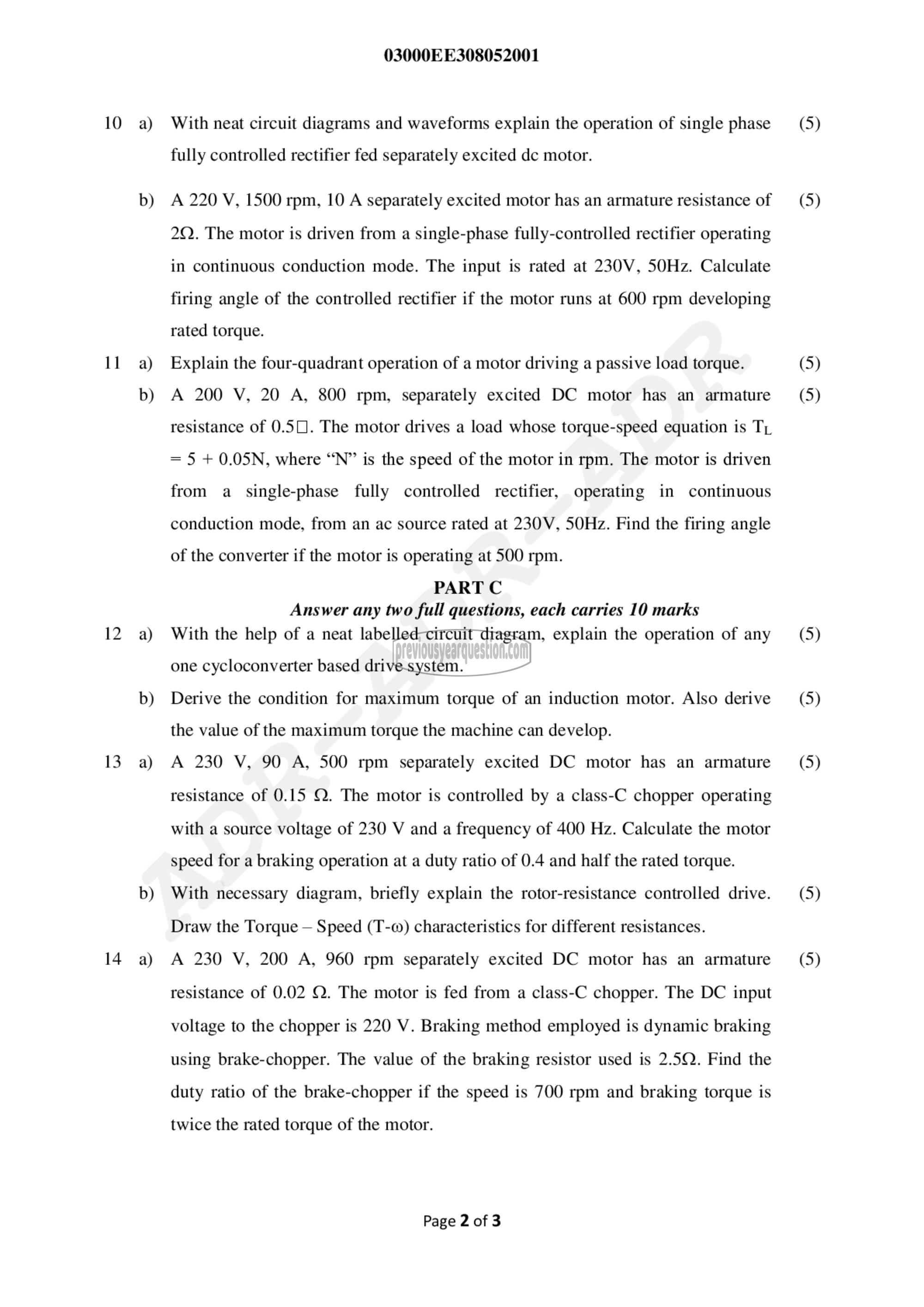APJ ABDUL KALAM TECHNOLOGICAL UNIVERSITY Previous Years Question Paper & Answer
Semester : SEMESTER 6
Subject : Electric Drives
Year : 2020
Term : SEPTEMBER
Scheme : 2015 Full Time
Course Code : EE 308
Page:2
10
11
12
13
14
a)
b)
b)
a)
b)
a)
b)
a)
03000EE308052001
With neat circuit diagrams and waveforms explain the operation of single phase
fully controlled rectifier fed separately excited 0௦ motor.
A 220 V, 1500 rpm, 10 A separately excited motor has an armature resistance of
2Q. The motor is driven from a single-phase fully-controlled rectifier operating
in continuous conduction mode. The input is rated at 230V, 50112. Calculate
firing angle of the controlled rectifier if the motor runs at 600 rpm developing
rated torque.
Explain the four-quadrant operation of a motor driving a passive load torque.
A 200 V, 20 A, 800 rpm, separately excited DC motor has an armature
resistance of 0.50. The motor drives a load whose torque-speed equation 15 1൨
= 5 + 0.05N, where “N” is the speed of the motor in rpm. The motor is driven
from a single-phase fully controlled rectifier, operating in continuous
conduction mode, from an ac source rated at 230V, 50112. Find the firing angle
of the converter if the motor is operating at 500 rpm.
PART C
Answer any two full questions, each carries 10 marks
With the help of a neat labelled circuit diagram, explain the operation of any
one cycloconverter based drive system.
Derive the condition for maximum torque of an induction motor. Also derive
the value of the maximum torque the machine can develop.
A 230 V, 90 A, 500 rpm separately excited DC motor has an armature
resistance of 0.15 62. The motor is controlled by a class-C chopper operating
with a source voltage of 230 V and a frequency of 400 Hz. Calculate the motor
speed for a braking operation at a duty ratio of 0.4 and half the rated torque.
With necessary diagram, briefly explain the rotor-resistance controlled drive.
Draw the Torque - Speed (1-७) characteristics for different resistances.
A 230 V, 200 A, 960 rpm separately excited DC motor has an armature
resistance of 0.02 Q. The motor is fed from a class-C chopper. The DC input
voltage to the chopper is 220 V. Braking method employed is dynamic braking
using brake-chopper. The value of the braking resistor used is 2.5Q. Find the
duty ratio of the brake-chopper if the speed is 700 rpm and braking torque is
twice the rated torque of the motor.
Page 2 of 3
(5)
(5)
(5)
(5)
(5)
(5)
(5)
(5)
(5)
